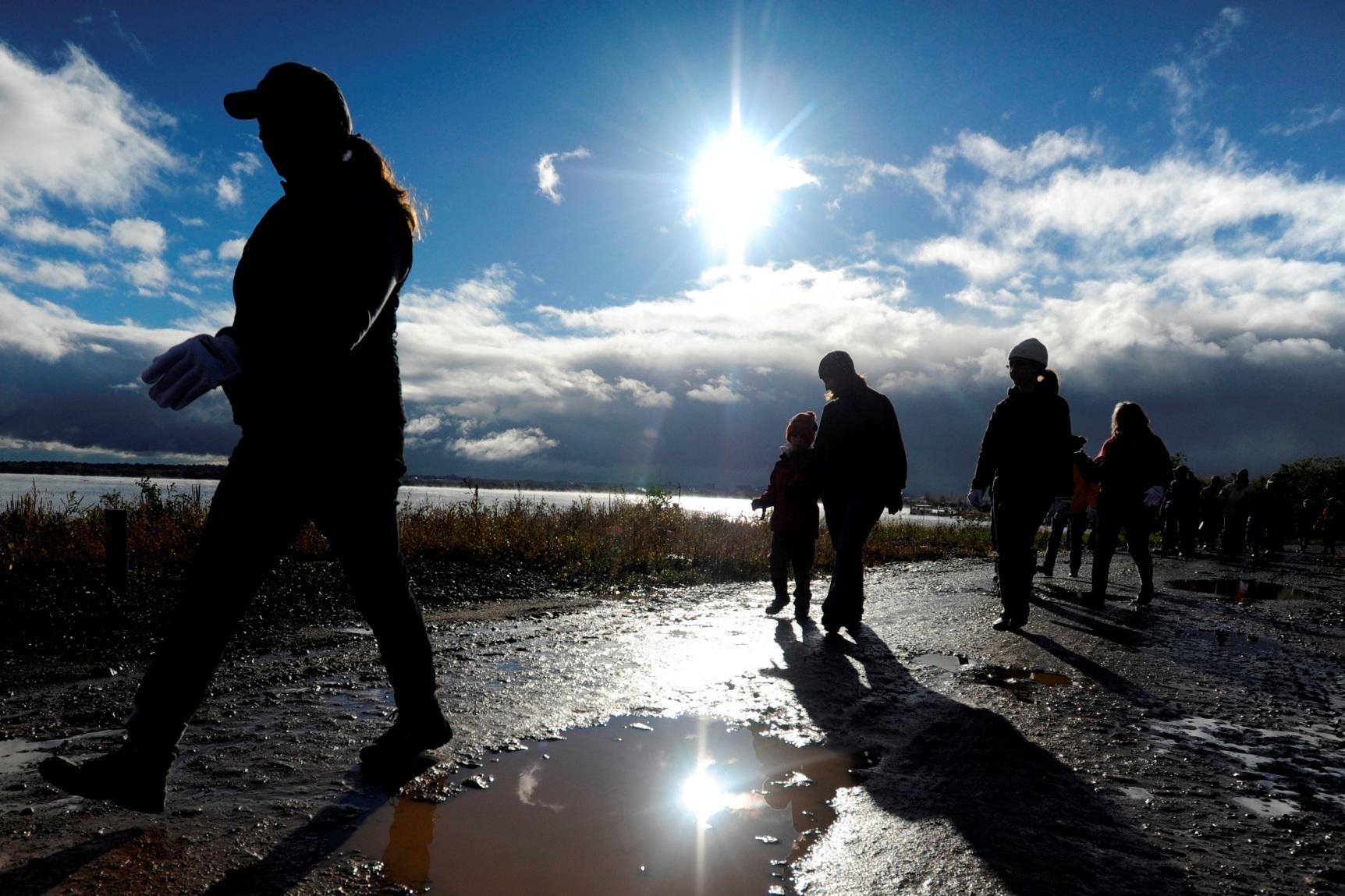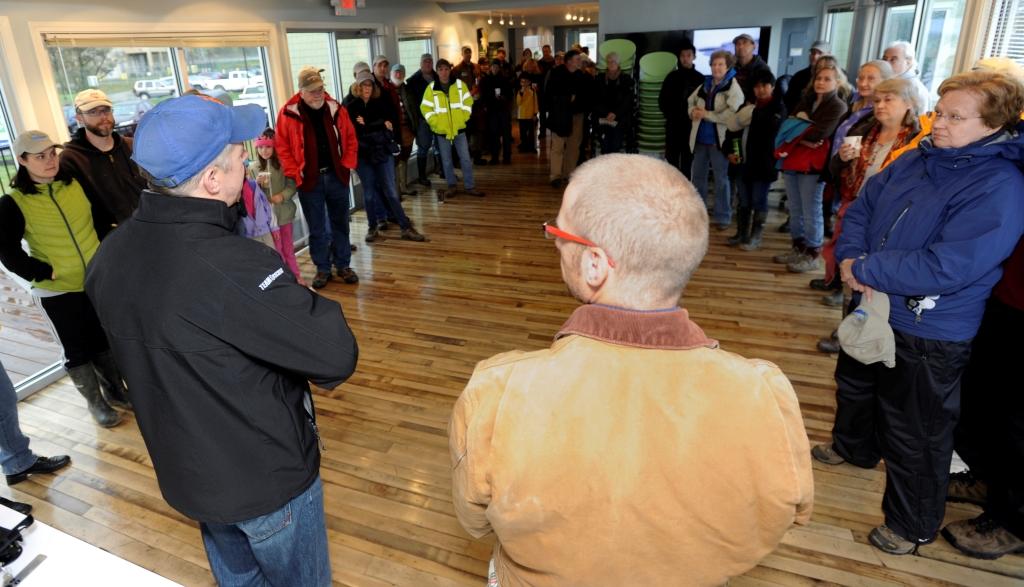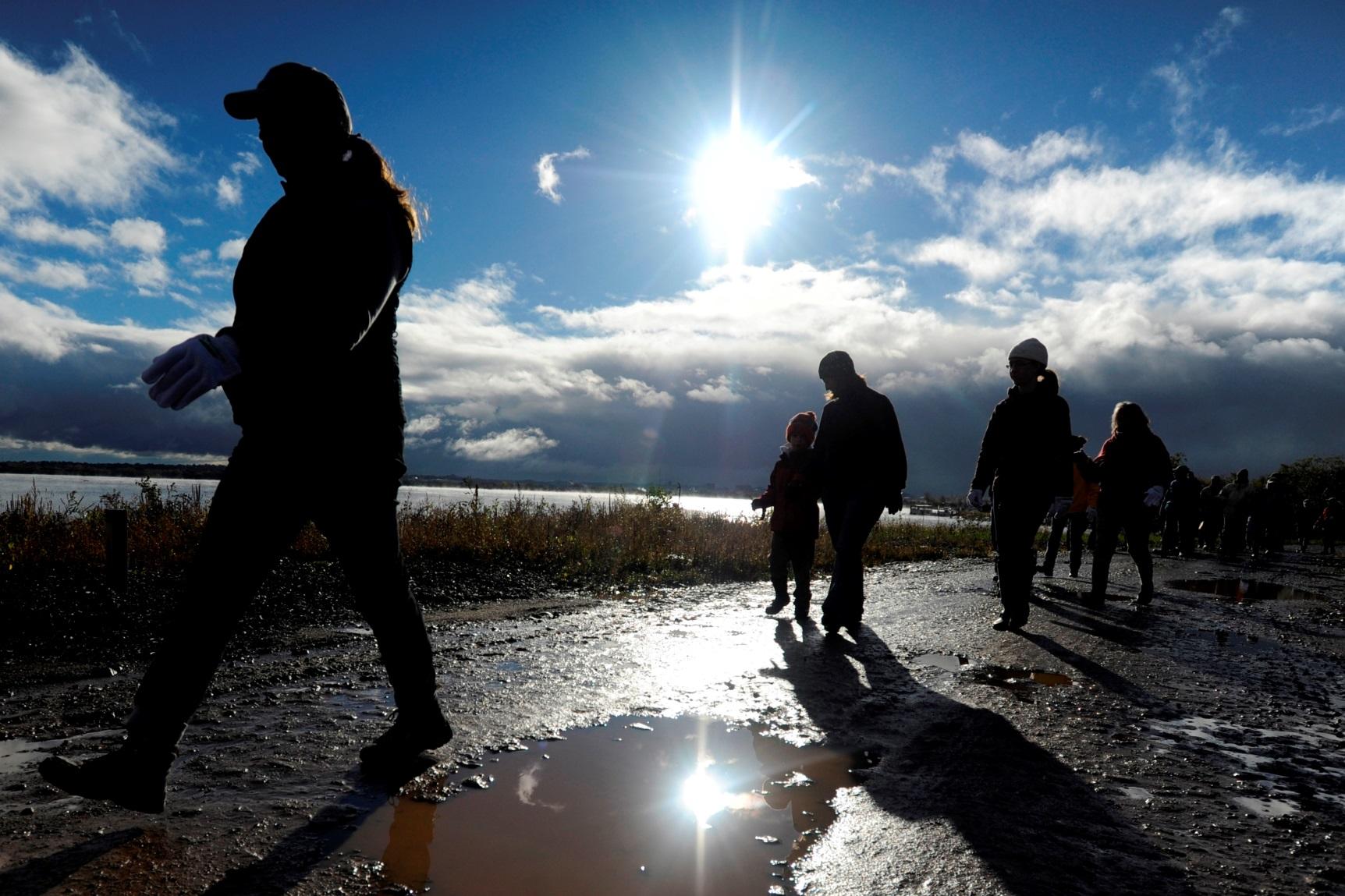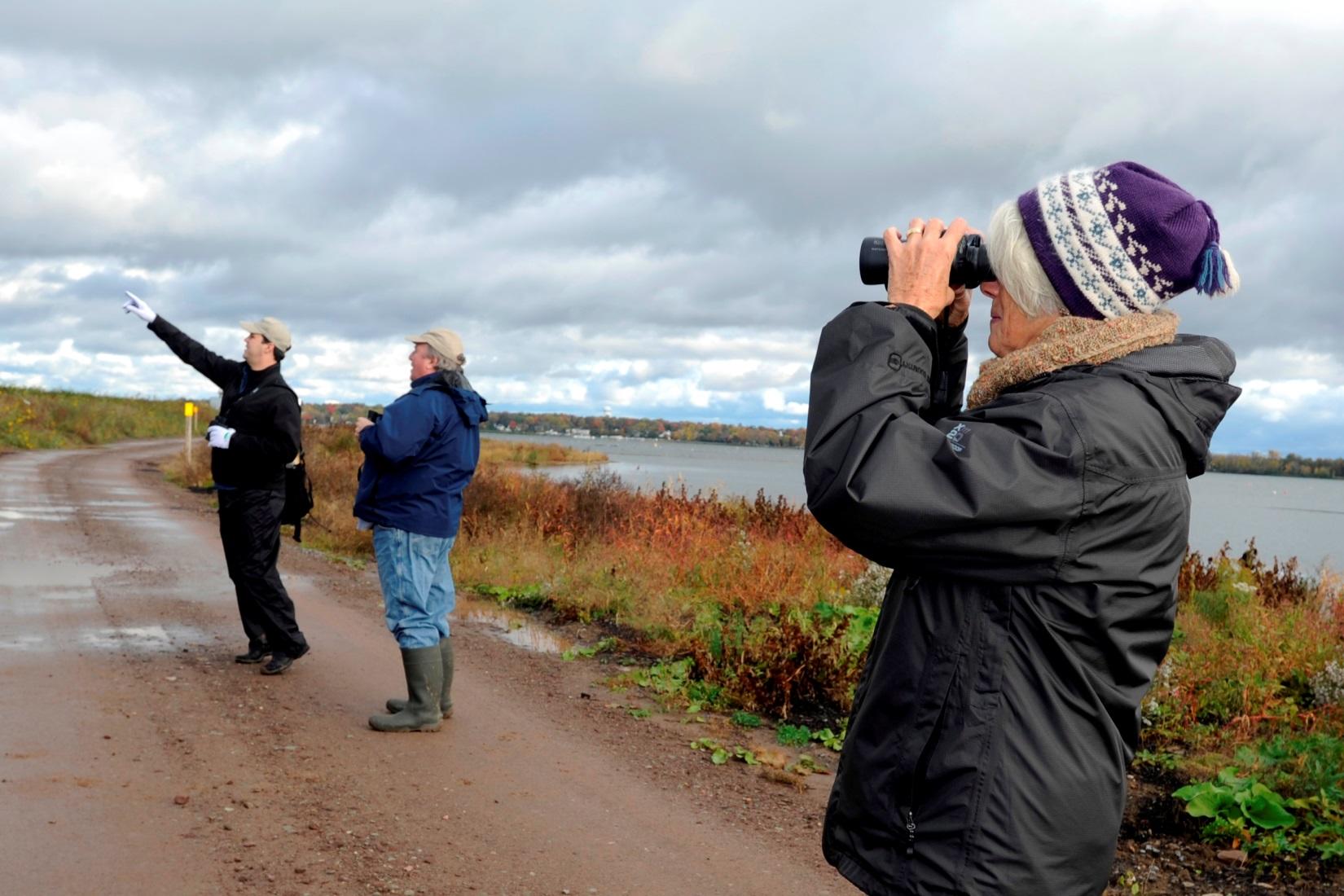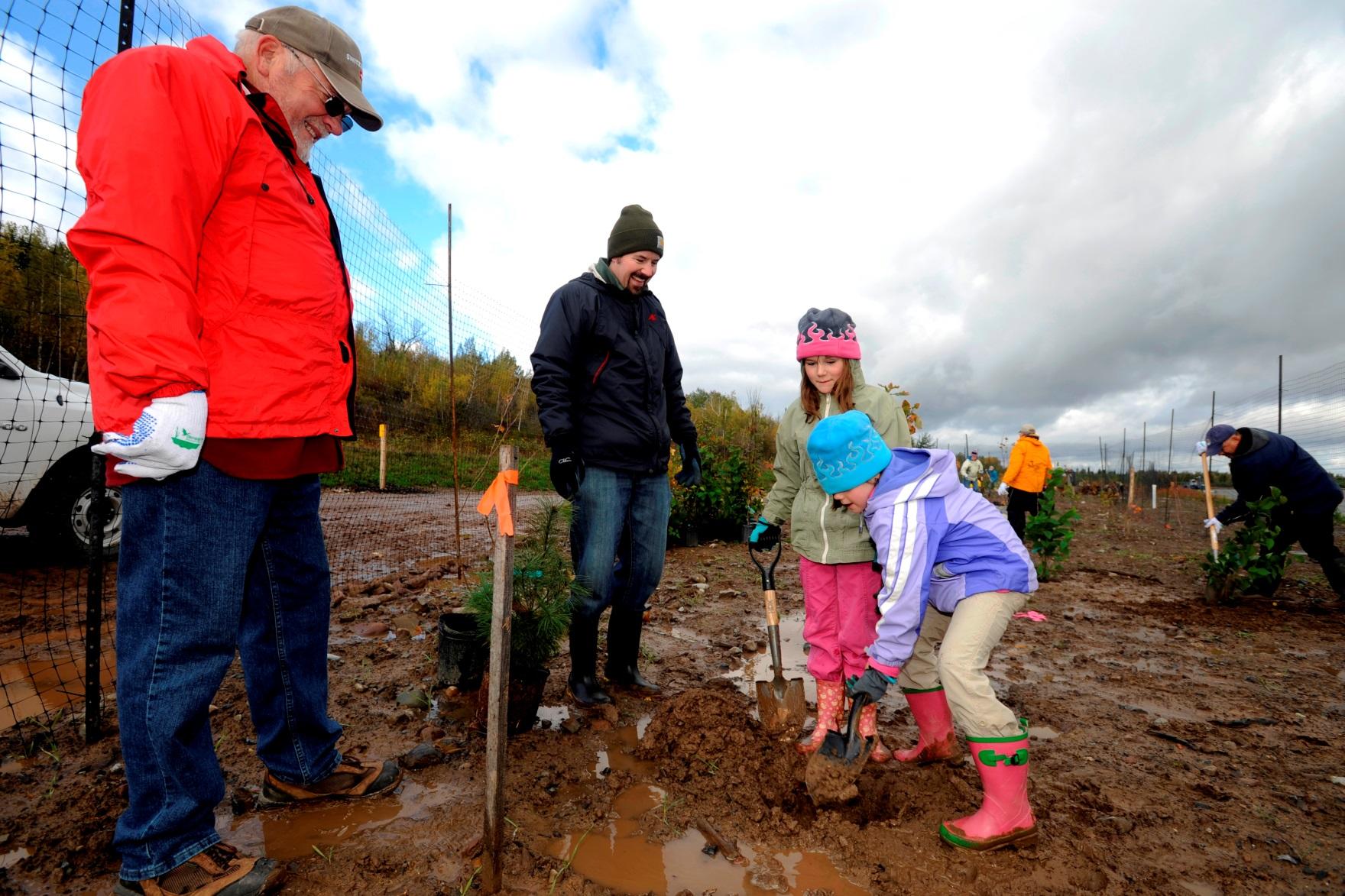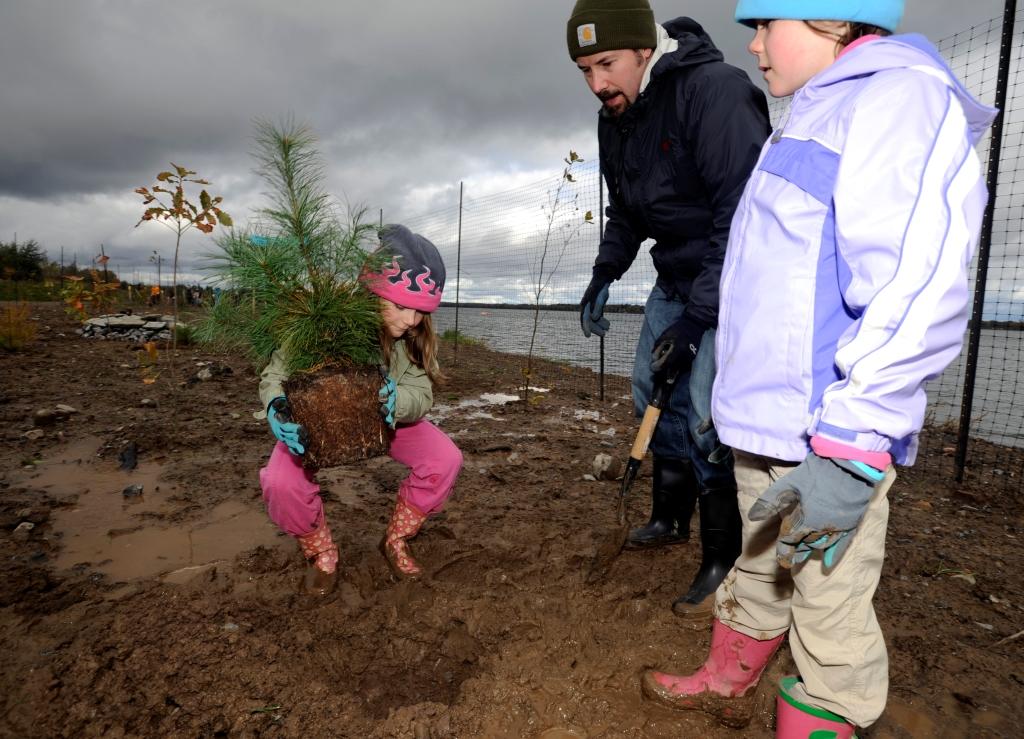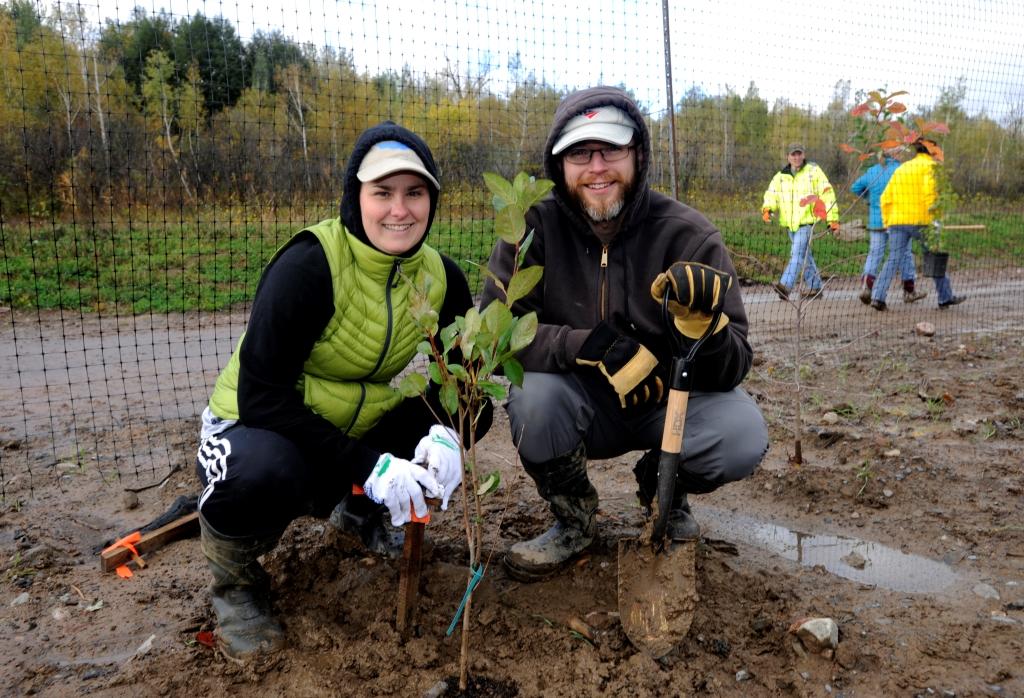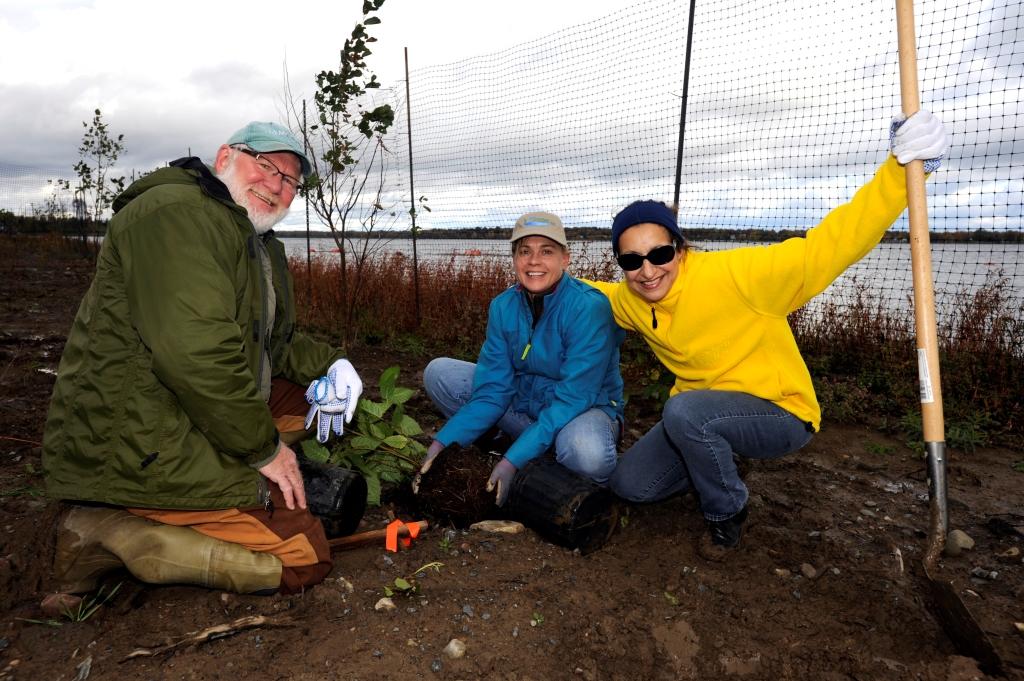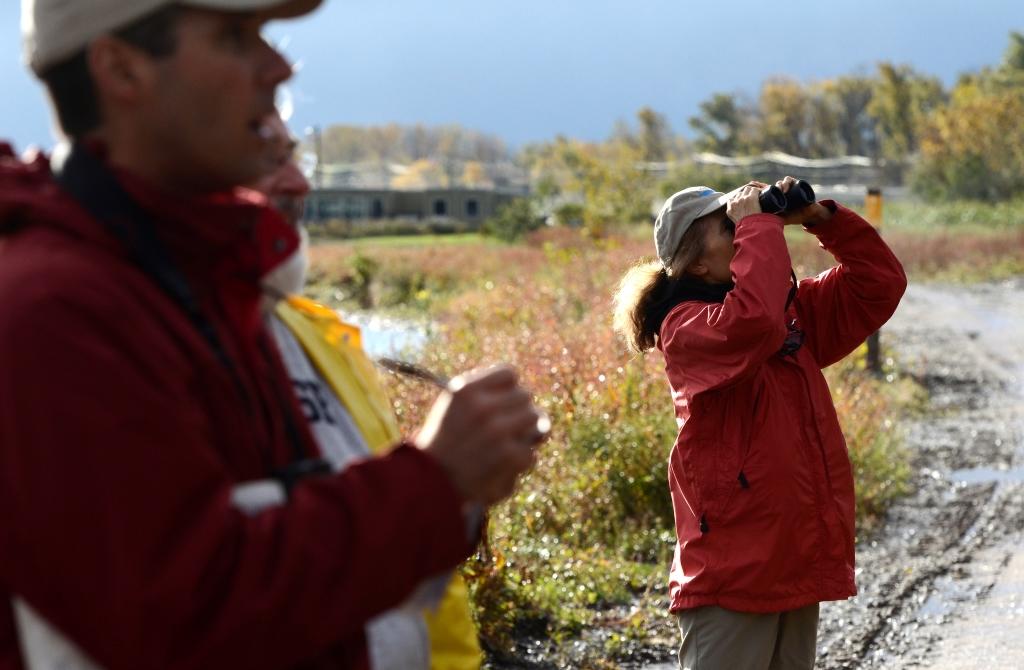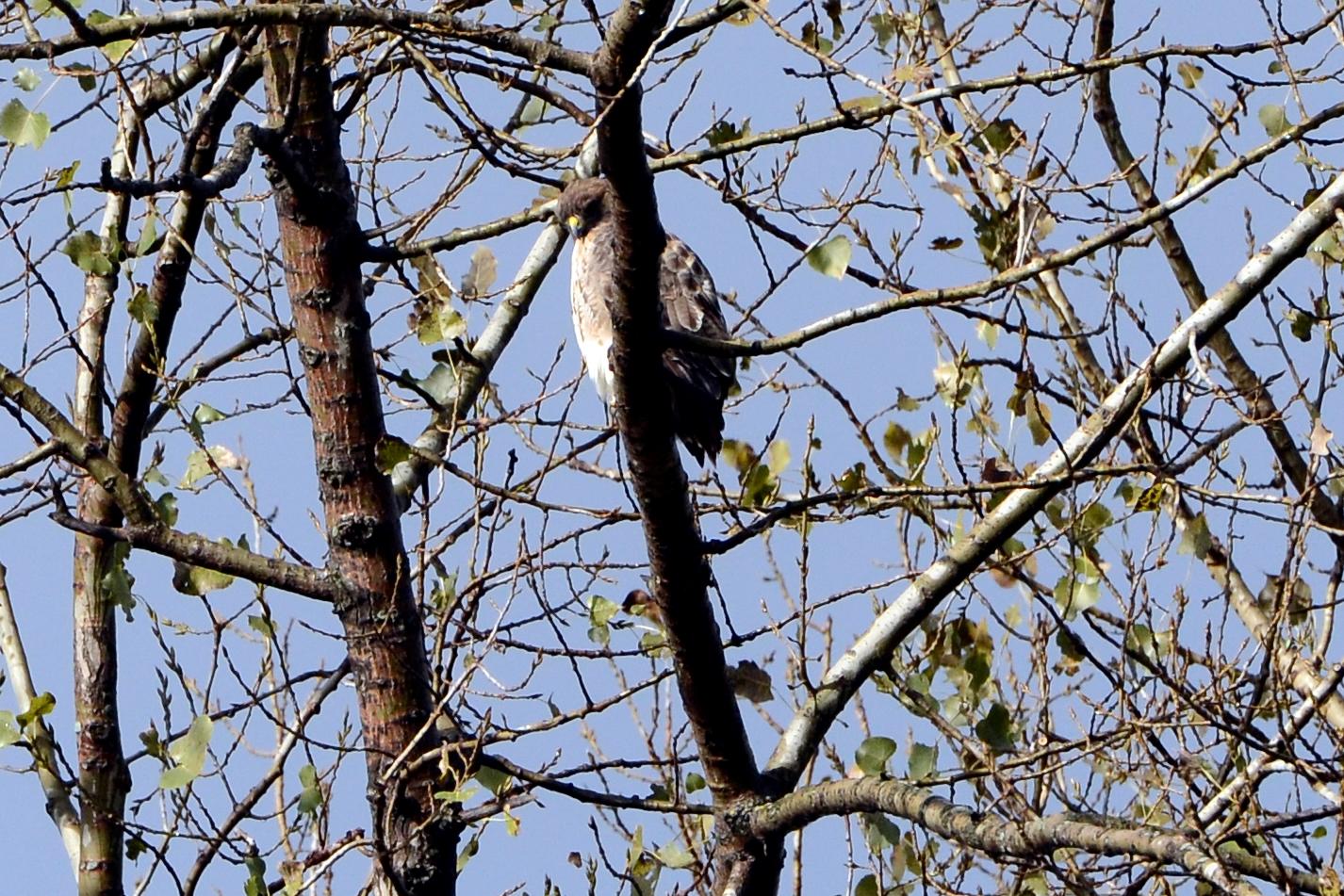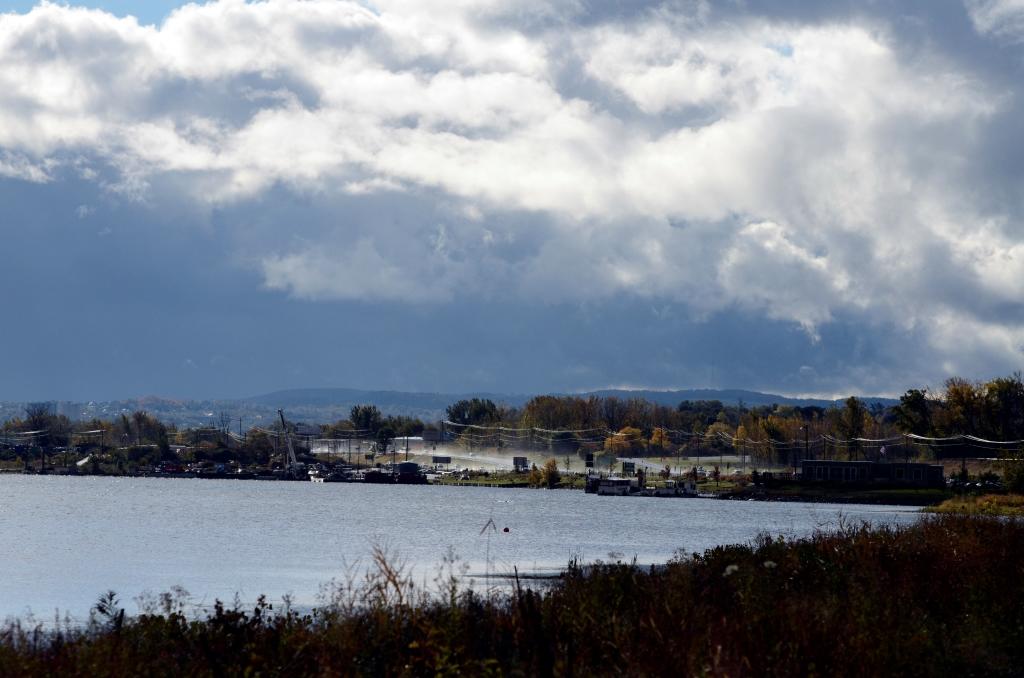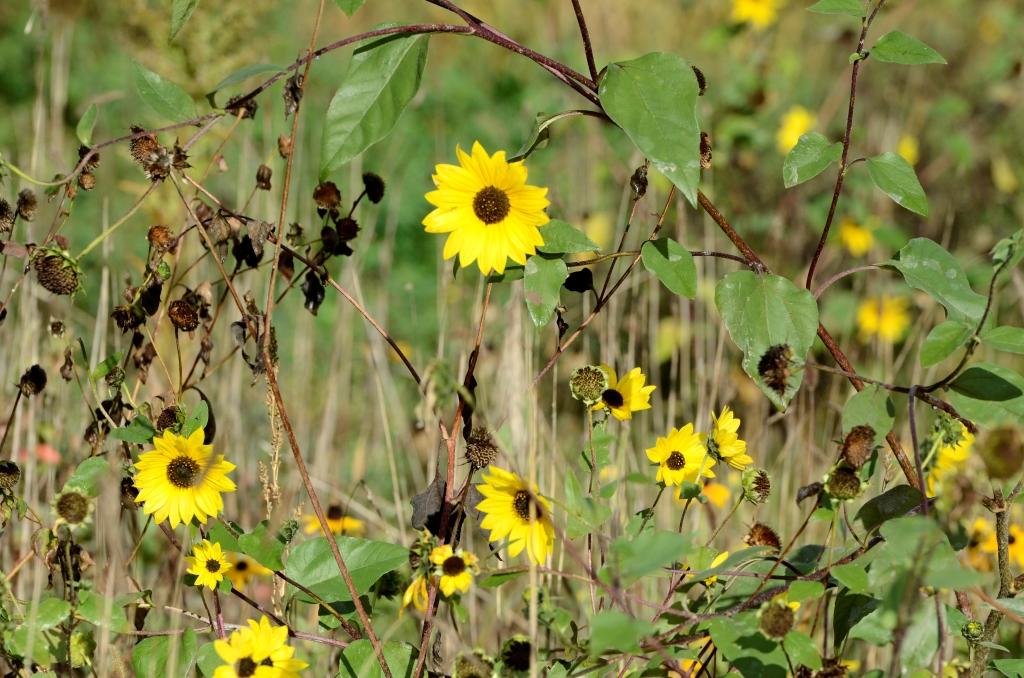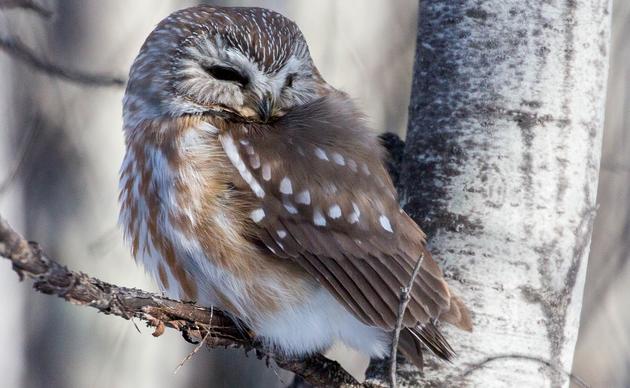Geddes Lakeshore
More than 1,100 plants, shrubs, and trees, from more than 47 diverse native species, have been planted to improve the lakeshore along I-690 in Geddes. The lakeshore enhancements, which the community helped design, will create a welcoming “Gateway to Syracuse.” Once the lake cleanup is complete, there also will be improved lake access and recreational opportunities available to the public.
During the design process, nearly 100 people attended a series of public meetings. They suggested ways to improve the lakeshore with walking and biking trails, enhance the visual connection to the lake, and support fishing access. They also recommended the use of diverse and sustainable vegetation to provide a more welcoming view for motorists entering and leaving Syracuse, and recognized the importance of considering traffic noise from I-690 while improving the lakeshore.
Southwest Lakeshore
In October 2011, more than 70 people gathered at the F.O.C.U.S. (Forging Our Community’s United Strength) Greater Syracuse community meeting to discuss a preliminary rendering of the southwest lakeshore and share their vision for enhancements. The rendering was based on suggestions from community members, municipal representatives, and local planners at a series of small group meetings.
Suggestions have included: increasing public lake access and recreational opportunities, connecting to an expanded trail system, enhancing scenic views, providing options for a mixed-use development, and more. As the cleanup continues, Honeywell will continue to engage groups in the southwest lakeshore visioning project. The wetlands along the southwest shoreline are included in the Onondaga Lake Habitat Restoration Plan. Final decisions about the cleanup for the land adjacent to I-690 along the southwest shoreline will be made by the New York State Department of Environmental Conservation in conjunction with the U.S. Environmental Protection Agency and the New York State Department of Health.
Donate to Audubon
Help secure the future for birds at risk from climate change, habitat loss and other threats. Your support will power our science, education, advocacy and on-the-ground conservation efforts.

